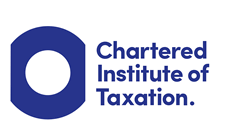Letter revoking a VAT option to tax
If you exercise the option to tax a commercial property for VAT purposes it is irrevocable except in a few situations. If you do want to revoke the option, use our letter to help ensure that you send the correct documents and information to HMRC so that it is effective.
About the letter
Once made there are only three situations where you can revoke an option to tax:
- by notification within six months of the option being made (a cooling-off period)
- automatically six years after the interest in the land or building has been disposed of
- by notification where more than 20 years have elapsed since the option was made, and certain conditions are met.
Revocation is subject to conditions which are detailed in HMRC’s VAT Notice 742A (http://tinyurl.com/k5azk4p).
To revoke under either the first or third option, you need to complete the appropriate form - VAT1614C or VAT1614J respectively; however, we also recommend sending a covering letter with the form.
How to use
Use our Revoking Option to Tax Letter to create a letter to accompany a notice VAT1614C or VAT 1614J. You will need to enter the date the option was made, and the details of the commercial property that was subject to the option. We have designed the letter so that you can use it to revoke an option to tax within the six-month cooling off period or after 20 years. Delete the section of the form which isn’t applicable.
Note. If you don’t complete and send a VAT1614C or VAT1614J, your revocation won’t be processed.
Related Topics
-
Should you revoke your 20-year-old option?
Your business has let out a building to a tenant and it is now just over 20 years since you opted to tax the property with HMRC. Should you revoke it so that your tenant no longer needs to pay VAT?
-
Chip shop owner fined £40k for hiring illegal worker
A Surrey fish and chip shop owner has been left in shock after being fined £40,000 for allegedly employing someone who didn’t have the right to work in the UK, even though he conducted a right to work check. Where did this employer go wrong and what can you learn from it?
-
Change to IHT on pensions proposals
HMRC has published a policy statement announcing an important change to its plans to include pension savings in an individual's estate for inheritance tax (IHT) purposes. What’s the full story?










 This website uses both its own and third-party cookies to analyze our services and navigation on our website in order to improve its contents (analytical purposes: measure visits and sources of web traffic). The legal basis is the consent of the user, except in the case of basic cookies, which are essential to navigate this website.
This website uses both its own and third-party cookies to analyze our services and navigation on our website in order to improve its contents (analytical purposes: measure visits and sources of web traffic). The legal basis is the consent of the user, except in the case of basic cookies, which are essential to navigate this website.